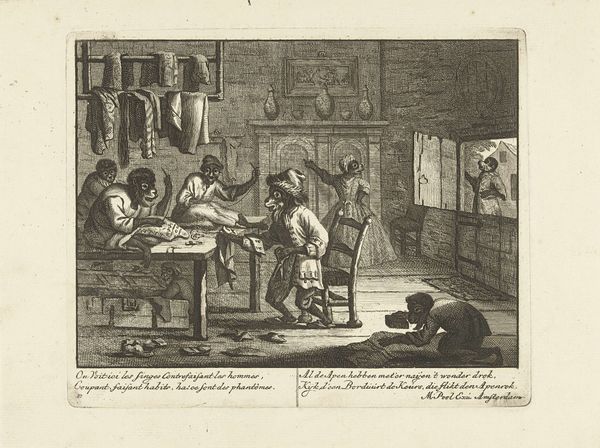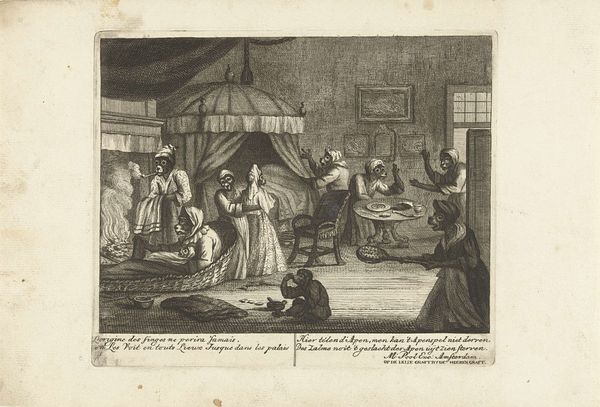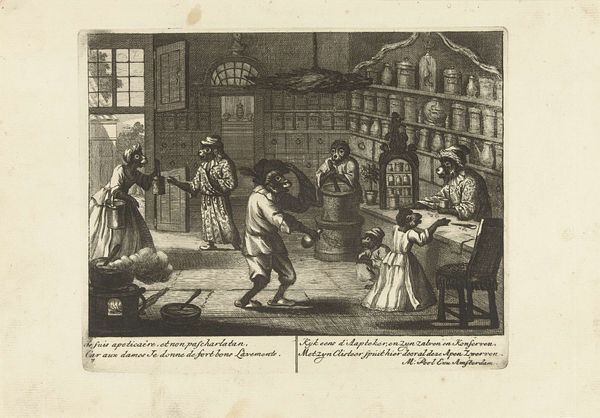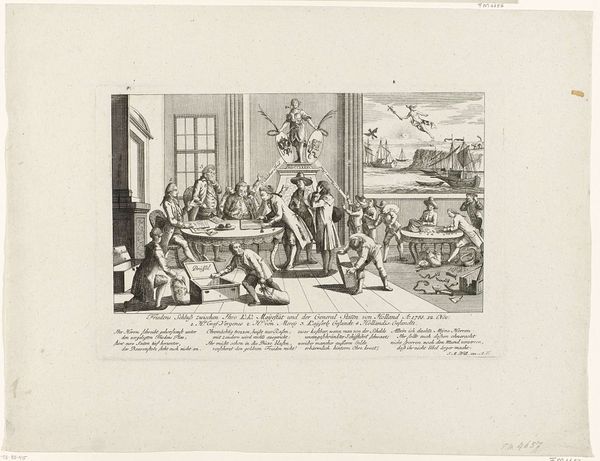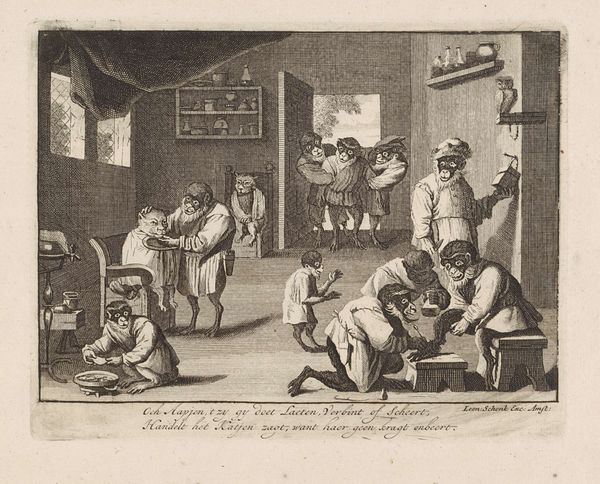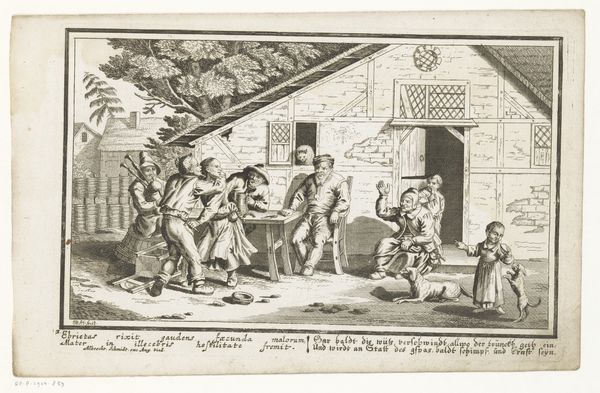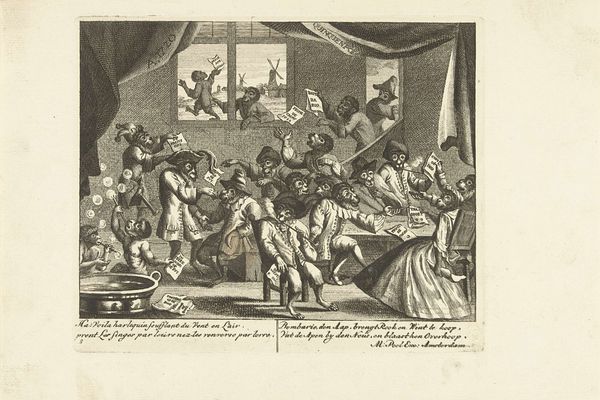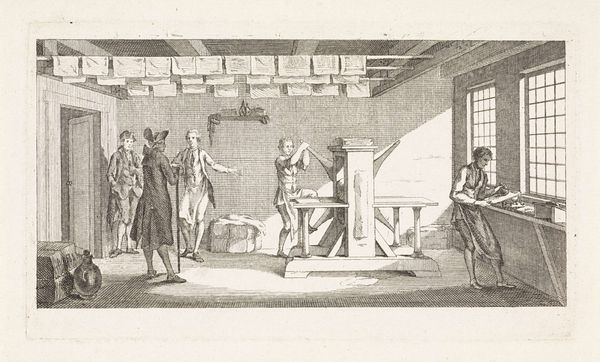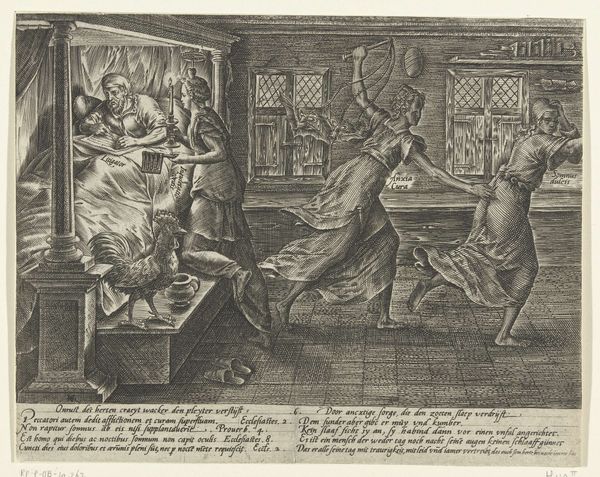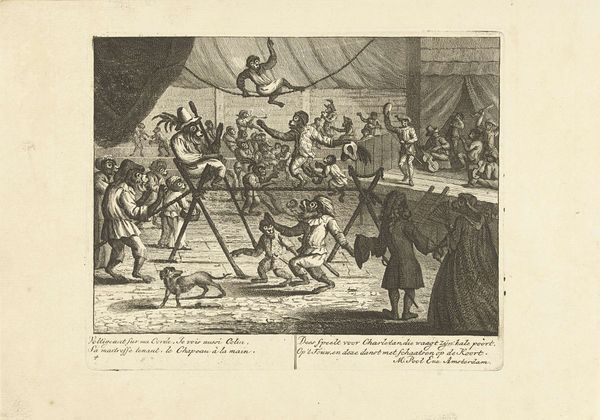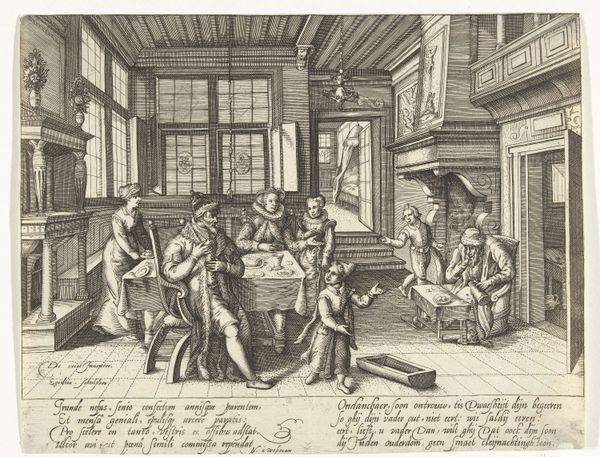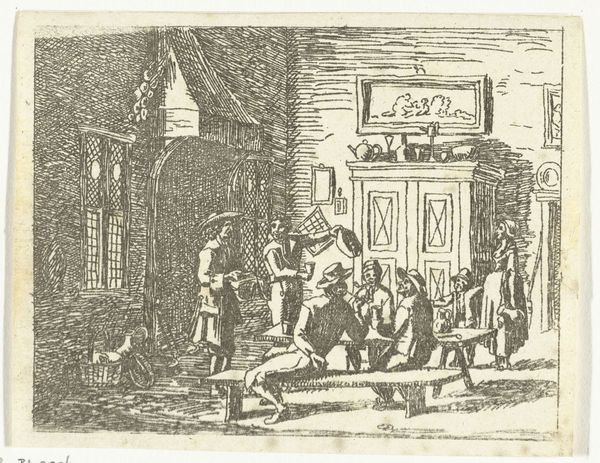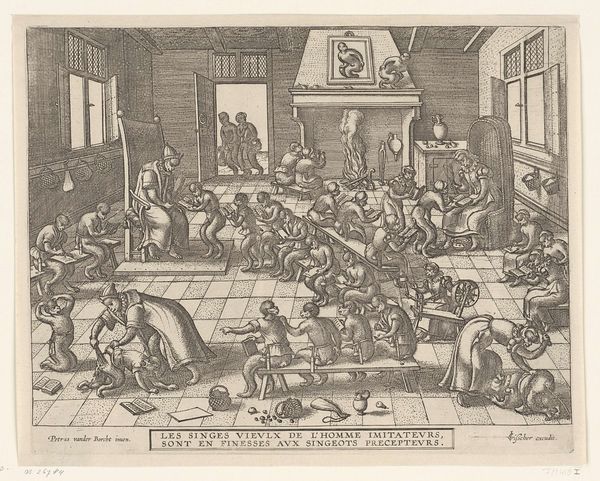
print, engraving
#
baroque
# print
#
figuration
#
genre-painting
#
history-painting
#
engraving
Dimensions: height 163 mm, width 198 mm
Copyright: Rijks Museum: Open Domain
Curator: Welcome to the Rijksmuseum. Today, we're examining an intriguing engraving by Matthijs Pool, created around 1720, titled "Apen in de bakkerij," or "Apes in the Bakery." Editor: My goodness, it's... chaotic! Chimpanzees running a bakery, or at least trying to. I’m struck by how busy it is, yet also a bit unsettling with that glaring fire and watchful owl. Curator: The depiction of animals performing human tasks was a common satirical trope in the 18th century. These "singeries," as they were known, often served to mock social customs and class structures. What stands out to me here is not just the absurdity, but also the social commentary implied by the image. Editor: Absolutely. Look at the level of detail in their tasks: weighing ingredients, stoking the oven, shaping dough. You get a sense for all the different roles, and the effort put in—or maybe the incompetence! How did Pool create such textures through engraving alone? I’m wondering about his workshop setup, his engraver’s tools… the materials and labour that went into its making are significant to consider. Curator: Indeed, and consider the viewers: for whom was this print made, and how would they have interpreted it? Pool was part of a well-established artistic circle in Amsterdam; these images tapped into existing societal critiques and moral observations, likely for a middle-class audience familiar with such imagery. The print’s style draws on Baroque traditions, evident in the dramatic lighting and intricate details. Editor: And speaking of detail, I’m curious about the actual process of making bread in that period – it’s very tactile. Were the various tools carefully researched for accuracy? Or, were they more generic references representing labour in workshops? The fire emanating out of the stove is very theatrical! Curator: That’s a key point: The drama adds an element of spectacle. While not aiming for strict documentary accuracy, the image uses familiar elements – bakery settings, apes enacting work – to deliver a biting satire. The owl, traditionally a symbol of wisdom, perched atop the oven could indicate either knowledge or foolishness in action. Editor: Looking at the final print I’m pondering on what kind of press was utilized to duplicate it, the paper, and where that bakery was located. All these layers in producing and then distributing Pool’s final work give insight into trade practices of that era. It’s quite brilliant. Curator: I agree, thinking about the social messaging around labour mixed with detailed technique offers layered meaning here. Editor: Definitely an enlightening piece of crafted material culture to unpack today!
Comments
No comments
Be the first to comment and join the conversation on the ultimate creative platform.

